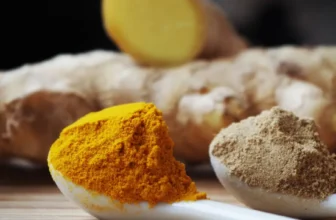Organic vs Non-Organic Cumin: Making an Informed Choice
Cumin is a staple spice in many cuisines worldwide, known for its distinctive flavor and numerous health benefits. When choosing between organic cumin and non-organic cumin, there are several factors to consider, including health benefits, environmental impact, and cost. This comprehensive guide will help you understand the differences between these two types of cumin and make an informed decision.
-
 Premium Black Cumin (Kala Zeera) – 100% Natural Organic & Pure | Intense Flavour & Rich Aroma | Best Price in Pakistan₨ 373.00 – ₨ 860.00Price range: ₨ 373.00 through ₨ 860.00★★★★★
Premium Black Cumin (Kala Zeera) – 100% Natural Organic & Pure | Intense Flavour & Rich Aroma | Best Price in Pakistan₨ 373.00 – ₨ 860.00Price range: ₨ 373.00 through ₨ 860.00★★★★★ -
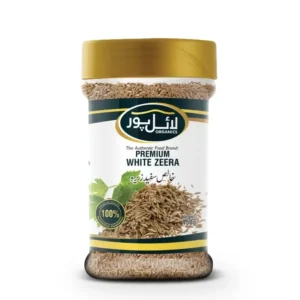 Premium White Cumin (Safaid Zeera) – 100% Natural Organic & Pure | Delicate Flavour & Rich Aroma | Best Price in Pakistan₨ 280.00 – ₨ 624.00Price range: ₨ 280.00 through ₨ 624.00
Premium White Cumin (Safaid Zeera) – 100% Natural Organic & Pure | Delicate Flavour & Rich Aroma | Best Price in Pakistan₨ 280.00 – ₨ 624.00Price range: ₨ 280.00 through ₨ 624.00
Table of Contents
Understanding Organic Cumin
- Chemical-Free Cultivation: Organic cumin is cultivated without synthetic pesticides, herbicides, or fertilizers. This reduces the risk of chemical residues in the final product.
- Soil Health: Organic farming practices, such as crop rotation and natural fertilizers, improve soil quality and promote biodiversity.
- Nutritional Value: Some studies suggest that organic spices, including cumin, may have higher nutrient density than their non-organic counterparts.

Understanding Non-Organic Cumin
Non-organic or conventional cumin is grown using modern agricultural techniques that often involve synthetic chemicals. Here are some critical points about non-organic cumin:
- Pesticide Usage: Non-organic cumin is often treated with synthetic pesticides and herbicides to control pests and weeds, which can leave residue levels in the spice.
- Yield: Conventional farming practices yield higher crop yields, making non-organic cumin more widely available and often cheaper.
- Environmental Impact: Using synthetic chemicals in conventional farming can lead to soil degradation and water contamination, impacting the environment negatively.
Health Benefits of Organic Cumins
Choosing organic cumin can offer several health benefits:
- Reduced Exposure to Chemicals: Cumin are free from synthetic pesticides and fertilizers, reducing exposure to potentially harmful chemicals.
- Nutritional Content: Organic cumin contain higher levels of certain nutrients and antioxidants due to the natural growing methods.
- Better Taste and Aroma: Many consumers report that organic spices have a more robust and authentic flavor than non-organic ones.
Health Benefits of Non-Organic Cumin
While non-organic cumin may not offer the same level of health benefits as organic cumin, it still provides essential nutrients and health advantages:
- Affordability: Non-organic cumin are generally more affordable, making it accessible to more consumers.
- Nutritional Value: Despite synthetic chemicals, non-organic cumin retains significant nutritional value and contributes to a healthy diet.
- Availability: Non-organic cumin are widely available, ensuring a consistent supply for culinary use.

Environmental Impact
The environmental impact of cumin cultivation is a significant factor in the organic vs. non-organic debate.
- Organic Farming: Organic cumin farming supports sustainable agriculture by enhancing soil health, reducing pollution, and promoting biodiversity. Organic practices help maintain the natural balance of ecosystems.
- Conventional Farming: Using synthetic chemicals in conventional farming can lead to soil degradation, water contamination, and biodiversity loss. These practices often have a negative long-term impact on the environment.
Consumer Preference and Market Demand
Consumer preferences and market demand are crucial in the popularity of organic and non-organic cumin.
- Growing Demand for Organic: As awareness about health and environmental issues increases, more consumers opt for organic products. This has led to a rise in demand for organic cumin.
- Availability of Non-Organic: Despite the growing popularity of organic products, non-organic cumin remain widely available and are preferred by consumers looking for affordable options.
Cost Comparison
Cost is a significant factor when choosing between organic and non-organic cumin.
- Higher Cost of Organic: Organic cumin is generally more expensive due to labor-intensive farming practices and lower yields.
- Affordability of Non-Organic: Non-organic cumin is more affordable, making it accessible to a more extensive consumer base.
Taste Differences
Taste is subjective, but many consumers report noticeable differences between organic and non-organic cumin.
- Organic Cumin: Often described as having a richer, more robust flavor and aroma. The natural growing methods are believed to enhance the spice’s intrinsic qualities.
- Non-Organic Cumin: While still flavorful, some consumers find that non-organic cumin lacks the depth of flavor in organic cumin.
Organic Certification and Labeling
Understanding organic certification and labeling is crucial when purchasing organic cumin.
- Organic Certification: Look for certifications from recognized bodies such as USDA Organic, which ensure that the cumin meets strict organic standards.
- Labeling Requirements: Certified organic products will have clear labeling, indicating they are free from synthetic chemicals and GMOs.

Nutritional Value Comparison
The nutritional value of cumin can vary based on its cultivation methods.
- Organic Cumin: Contain higher levels of certain nutrients and antioxidants due to the absence of synthetic chemicals.
- Non-Organic Cumin: Provide essential nutrients but have lower levels of some nutrients than organic cumin.
Sustainability and Farming Practices
The sustainability of farming practices is a critical consideration in the organic vs non-organic debate.
- Organic Farming: Emphasizes sustainable practices such as crop rotation, natural fertilizers, and biological pest control, which help maintain ecological balance.
- Conventional Farming: This relies on synthetic chemicals and intensive farming practices, which can lead to environmental degradation over time.
Safety and Residue Levels
The safety of cumin, particularly concerning pesticide residues, is an essential factor for consumers.
- Organic Cumin: Free from synthetic pesticide residues, offering a safer option for consumers concerned about chemical exposure.
- Non-Organic Cumin: These contain low pesticide residues, but these are typically within safety limits set by regulatory bodies.
Conclusion
When choosing between cumin, it’s essential to consider health benefits, environmental impact, cost, and taste. Organic cumin offers advantages like reduced chemical exposure, better soil health, and potentially higher nutritional value, but it comes at a higher cost. Non-organic cumin is more affordable and widely available but may involve environmental and health trade-offs due to the use of synthetic chemicals.
Top Selling Products at Lyallpur Organics
-
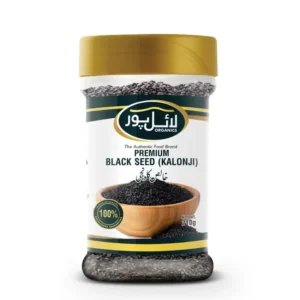 Premium Black Seed – Kalonji (Khalis Kalwanji) – 100% Natural & Pure | Nutrient-Rich & Flavorful | Best Price in Pakistan₨ 277.00 – ₨ 640.00Price range: ₨ 277.00 through ₨ 640.00
Premium Black Seed – Kalonji (Khalis Kalwanji) – 100% Natural & Pure | Nutrient-Rich & Flavorful | Best Price in Pakistan₨ 277.00 – ₨ 640.00Price range: ₨ 277.00 through ₨ 640.00 -
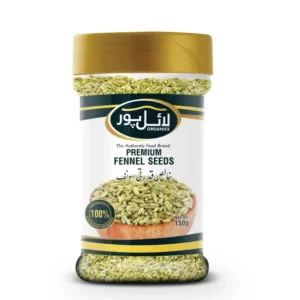 Premium Fennel Seeds (Saunf) – 100% Natural Organic & Pure | Rich in Flavor & Aroma | Best Price in Pakistan₨ 233.00 – ₨ 490.00Price range: ₨ 233.00 through ₨ 490.00
Premium Fennel Seeds (Saunf) – 100% Natural Organic & Pure | Rich in Flavor & Aroma | Best Price in Pakistan₨ 233.00 – ₨ 490.00Price range: ₨ 233.00 through ₨ 490.00 -
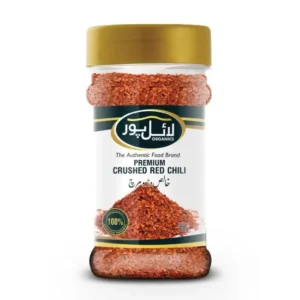 Premium Crushed Red Chili (Crushed Lal Mirch, Darra Mirch) – 100% Natural & Pure | Super Spicy Flavour & Vibrant Color | Best Price in Pakistan₨ 219.00 – ₨ 780.00Price range: ₨ 219.00 through ₨ 780.00★★★★★
Premium Crushed Red Chili (Crushed Lal Mirch, Darra Mirch) – 100% Natural & Pure | Super Spicy Flavour & Vibrant Color | Best Price in Pakistan₨ 219.00 – ₨ 780.00Price range: ₨ 219.00 through ₨ 780.00★★★★★ -
 Premium Kishmish (Raisin) Sundarkhani – 100% Natural Organic & Pure | Rich in Nutrients & Sweet Flavour | Best Price in Pakistan₨ 281.00 – ₨ 410.00Price range: ₨ 281.00 through ₨ 410.00
Premium Kishmish (Raisin) Sundarkhani – 100% Natural Organic & Pure | Rich in Nutrients & Sweet Flavour | Best Price in Pakistan₨ 281.00 – ₨ 410.00Price range: ₨ 281.00 through ₨ 410.00 -
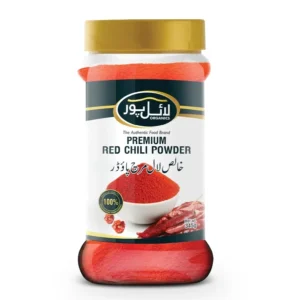 Premium Red Chili Powder (Lal Mirch Powder) – 100% Natural & Pure | Hot Spicy Flavour & Vibrant Color | Best Price in Pakistan₨ 200.00 – ₨ 1,015.00Price range: ₨ 200.00 through ₨ 1,015.00
Premium Red Chili Powder (Lal Mirch Powder) – 100% Natural & Pure | Hot Spicy Flavour & Vibrant Color | Best Price in Pakistan₨ 200.00 – ₨ 1,015.00Price range: ₨ 200.00 through ₨ 1,015.00 -
 Premium Black Pepper Powder (Kali Mirch Powder) – 100% Natural & Pure | Bold Flavour & Rich Aroma | Best Price in Pakistan₨ 664.00
Premium Black Pepper Powder (Kali Mirch Powder) – 100% Natural & Pure | Bold Flavour & Rich Aroma | Best Price in Pakistan₨ 664.00






